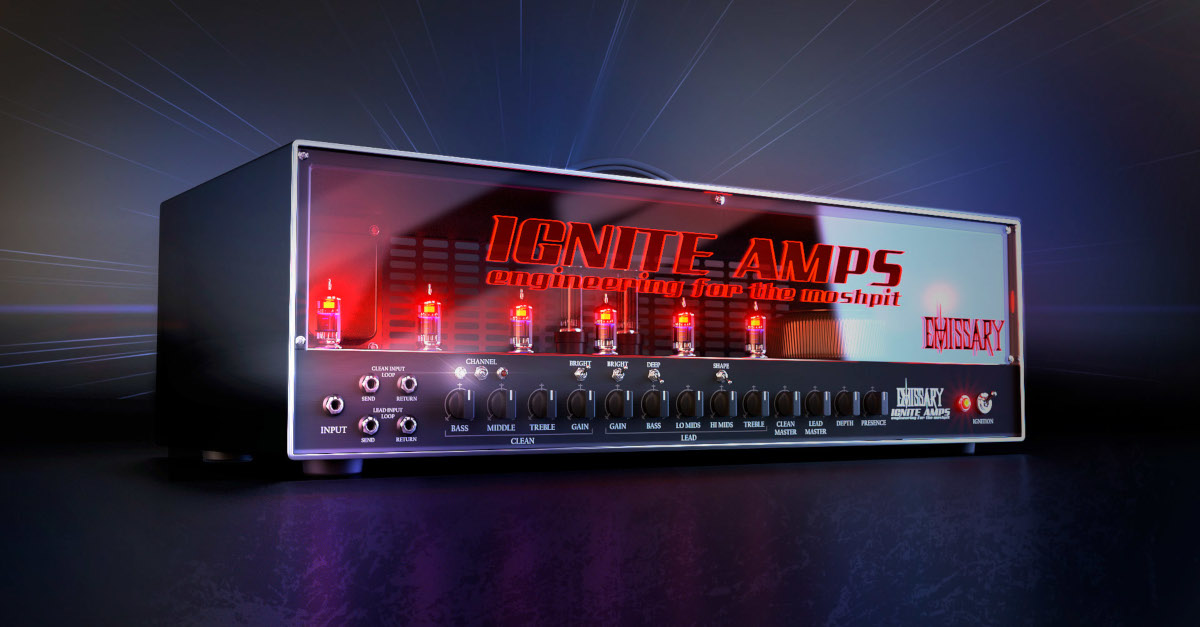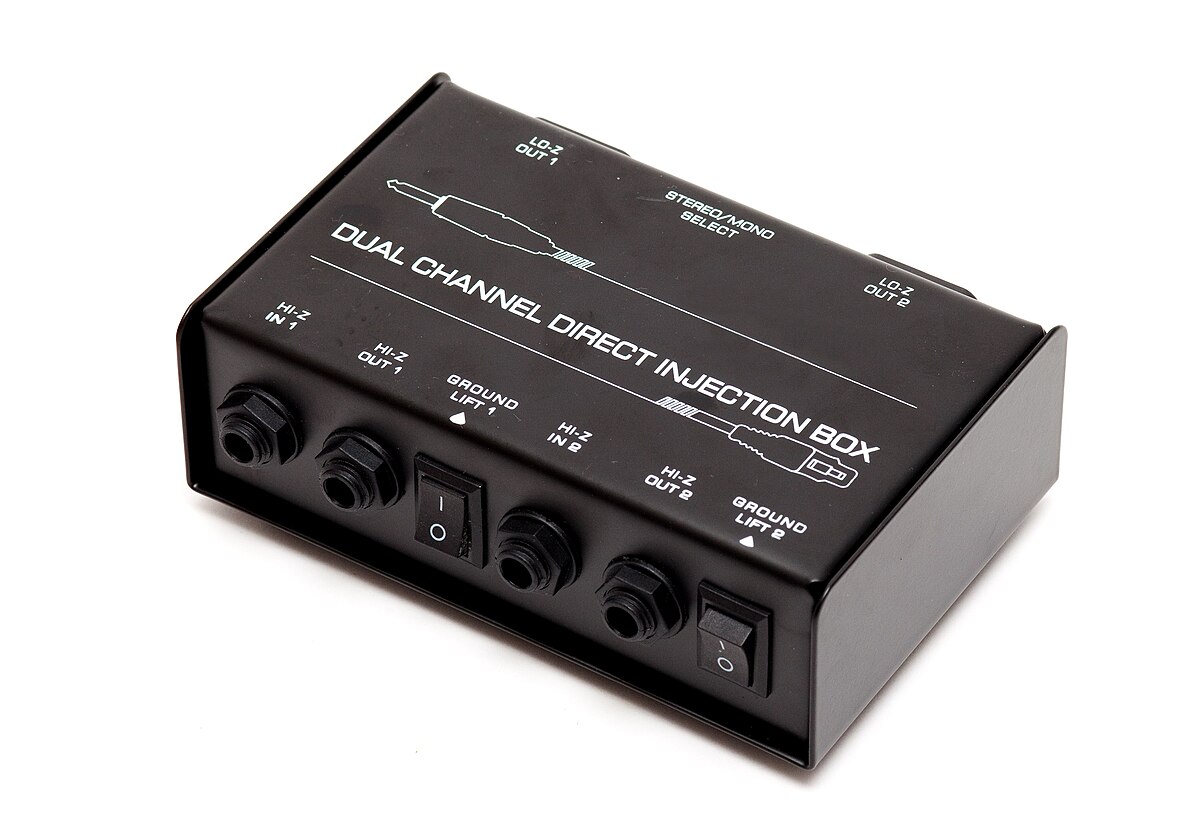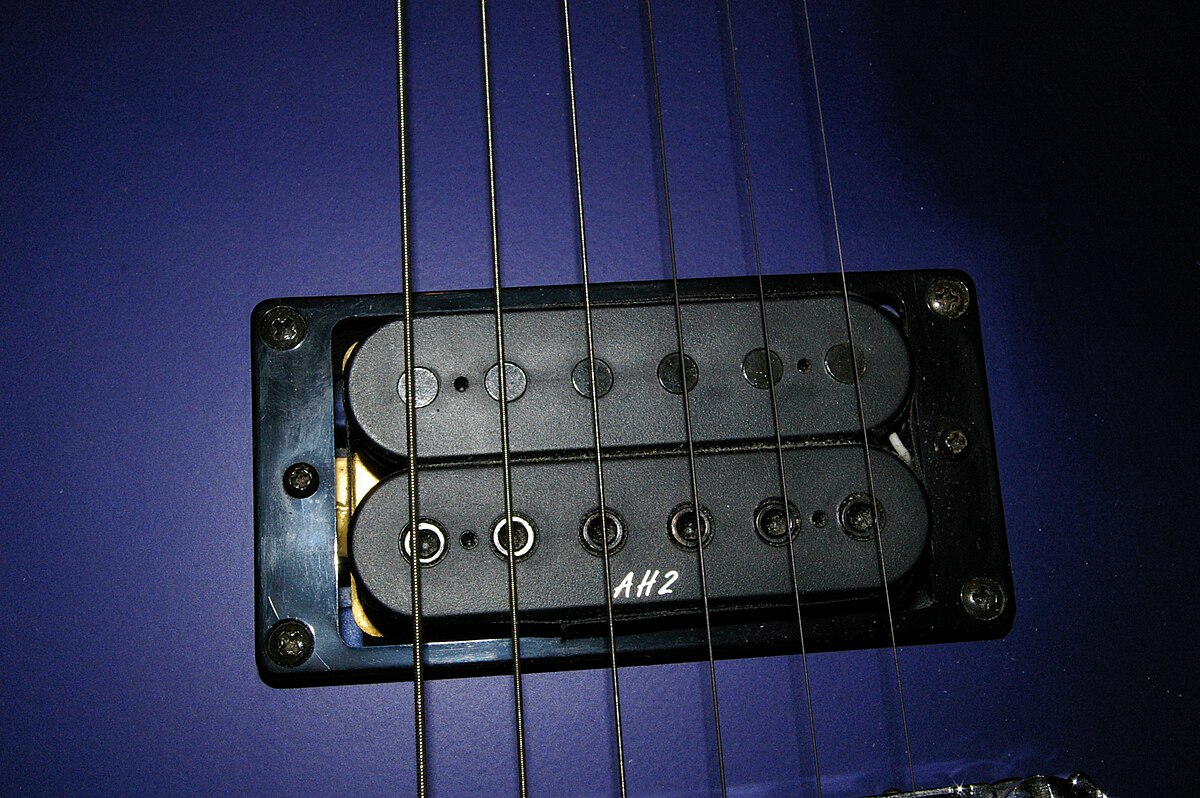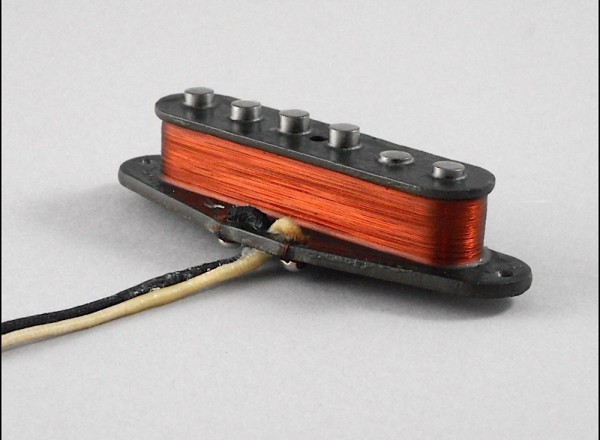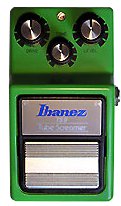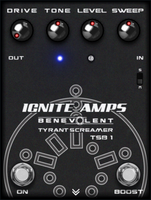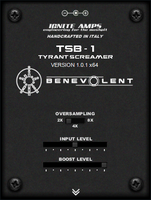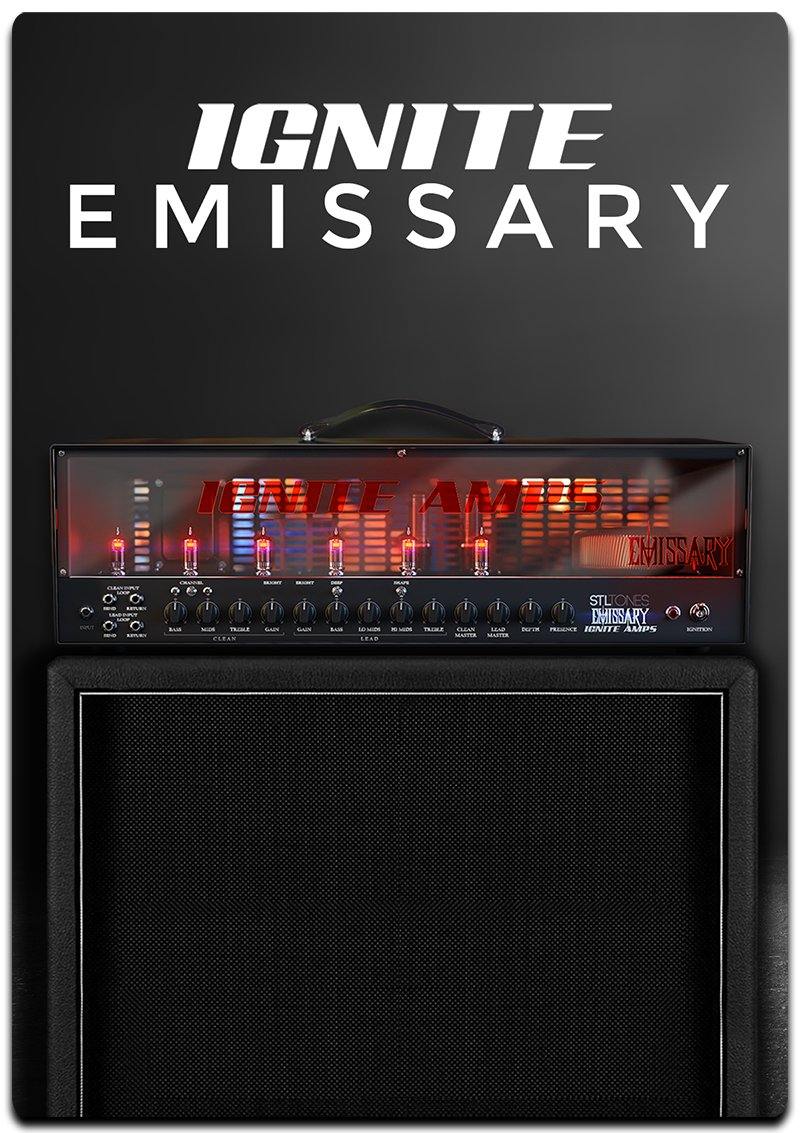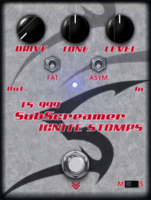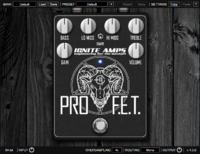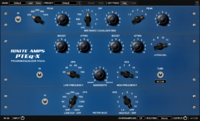Step five: Guitar cabinets and NadIR.
Perhaps the most important element that defines a good guitar tone is the guitar cabinet itself. In order to simulate this, Ignite Amps has developed NadIR, a free plugin that must be downloaded via the STL Tones website. (It comes bundled with the Emissary plugin linked above.)
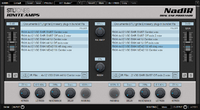
NadIR (pictured above) is a guitar-cabinet impulse response (IR) convolver plugin.
A guitar-cabinet IR is a small sound file created by inputting a sine sweep into a real guitar cabinet, recording the sine sweep with a microphone as it exits the cabinet speakers, and then digitally processing the results to create the final IR.
Convolvers plugins are tools that employ algorithms to modify an input signal with any selected IR. They are often used as reverb tools, but other uses are also possible. Common examples of convolvers include Fruity Convolver in FL Studio, REVerence in Cubase, and ReaVerb in Reaper. However, unlike the above, NadIR is designed specifically for use with guitar-cabinet IRs. (You can use it in other ways if you’re feeling adventurous, but that’s outside the realm of this tutorial.)
Countless free and commercial guitar-cabinet IRs can be found on the internet, each with slightly different qualities.
Things to look for in an IR are:
- What type of speaker cabinet?
- What type of speaker?
- What type of microphone?
- How was the microphone positioned?
The above list is ordered from least effect on guitar tone (speaker cabinet) to the greatest effect on guitar tone (microphone positioning).
NadIR comes bundled with a handful of guitar cabinet IRs, and their filenames describe how they were captured. For example, the filename
RKH 4x12 V30 SHR SM57 Center.wav describes the following:
RKH 4x12 = Randall Kirk Hammet guitar cabinet w/ four twelve-inch speakers
V30 = Celestion Vintage 30 speakers
SHR SM57 = Shure SM-57 microphone
Center = microphone placed perpendicular to speaker cap
Similarly, the filename
RKH 4x12 V30 SNH MD421W 45 deg.wav describes this:
RKH 4x12 = Randall Kirk Hammet guitar cabinet w/ four twelve-inch speakers
V30 = Celestion Vintage 30 speakers
SNH MD421W = Sennheiser MD-421W microphone
45 deg = microphone placed at 45° to the speaker cone
A common method for recording guitar cabinets is to use two different microphones with two different placements. The idea is to capture a “bright” timbre and a “dark” timbre, and then blend the two together. In order to accomplish this, NadIR allows you to load two IRs simultaneously—one in the left side and one in the right side. Once you have loaded a bright-sounding IR in one side and a dark-sounding IR in the opposite side, use the BALANCE knob to adjust according to taste.
Unlike the TSB-1 Tyrant Screamer and the Emissary, NadIR has three routing modes: mono, dual mono, and stereo. Mono mode uses both IRs and blends them according to settings. Stereo mode uses the left IR for the left channel and the right IR for the right channel, with the balance knob behaving more like a pan knob. Finally, dual-mono mode is also stereo, but both the left IR and right IR are blended according to settings and then the result is used identically for both left and right channels.
NadIR also features analog-modeled HI PASS and LO PASS filters. Unfortunately, EQing for guitars is a big topic, so I won’t go into detail here. As a general rule, however, high-pass filters are used to get rid of flubby, low-pitched rumbles; and low-pass filters are used to get rid of the upper-frequency “fizz” created by high-gain amplification.
You might be surprised at how low you can cut high-gain guitars, especially when using NadIR’s analog-modeled filters. Even setting the LO PASS filter at 6.0 KHz can sound good for heavily distorted guitars. This is partly because speakers used for metal guitar have a noticeable response drop-off at 7KHz, and frequencies above that tend to be a bit wibbly-wobbly. The frequency chart in the link below show this phenomenon as it relates to the Celestion Vintage 30 speakers:
Celestion Vintage 30 - The V30 guitar speaker features complex overtones, a warm low-end, a rich vocal mid-range and a beautifully detailed top-end.

celestion.com
The remaining features in NadIR are for detailed tweaking and won’t be covered in this tutorial. If you’re interested in their functions, please see the pdf manual that is included with the NadIR plugin.
IMPORTANT: Because IRs will have the most impact on your tone, please keep trying different IRs and IR combinations until you are satisfied. This make take some time at first, but you will eventually build your own small collection of go-to IRs.
ADDENDUM: For more information on how to make cabinet IRs sound more realistic, please see my
Guitar Cabinet Impulse Responses vs. Realism thread.

